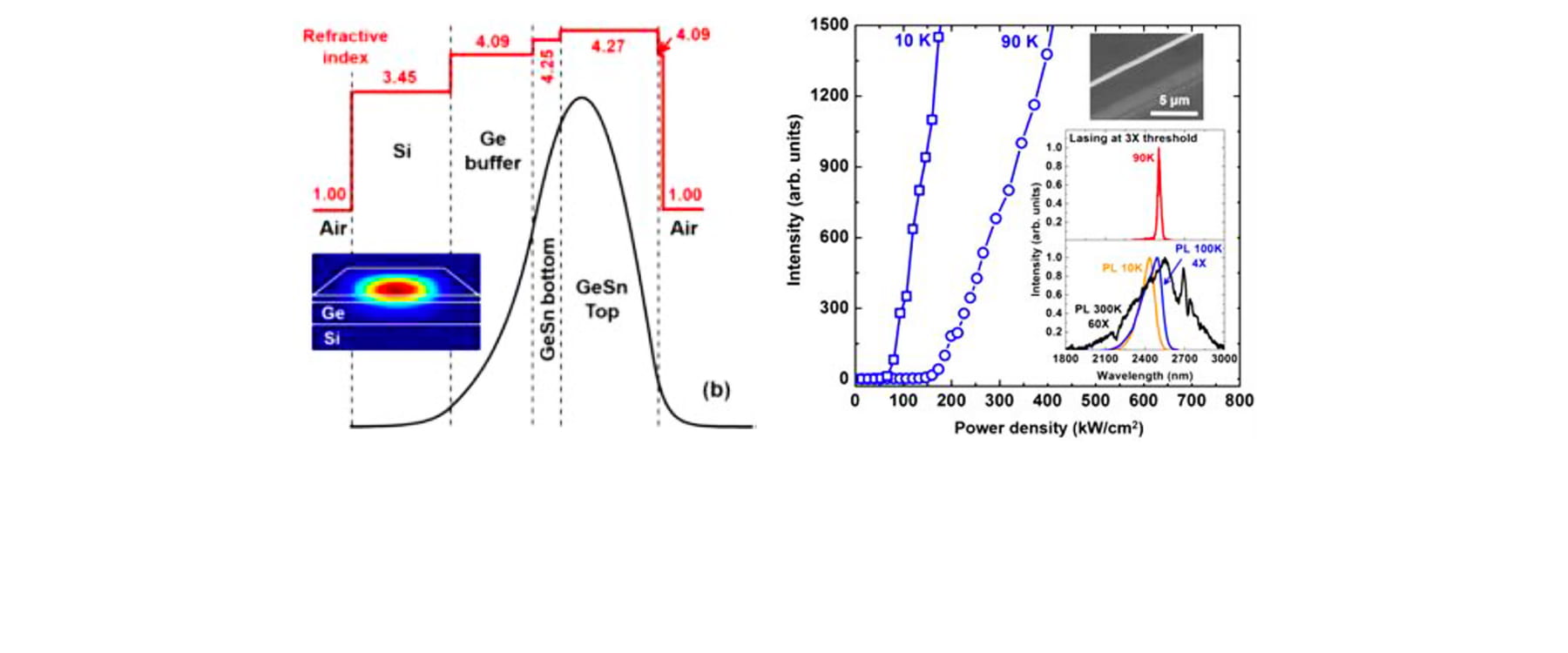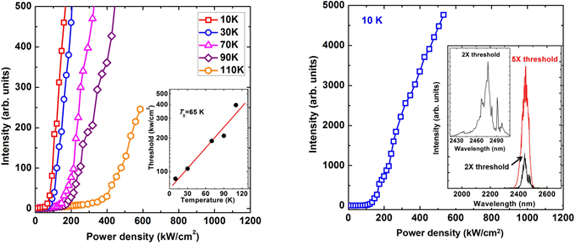Si-Based Germanium Tin Semiconductor Lasers for Optoelectronic Applications
Student: Sattar Al-Kabi
Degree: Ph.D., August 2017
Major Professor: Dr. Fisher Yu, Dr. Greg Salamo
Research Area(s):
Microelectronics
Photonics
Background/Relevance
- Alloying Sn to Ge is a new technique to achieve a group IV direct bandgap material.
- GeSn is compatible to be integrated with Si based ICs, and it is good candidate for Si-based lasers.
Innovation
- Use GeSn material, a new classification of direct bandgap material, as photonic devices such as LEDs and lasers.
- Monolithic and direct bandgap of group IV lasers that are compatible with CMOS processes.
Approach
- Use optical characterizations (PL, Raman, ellipsometry…) to study GeSn to confirm the best material for each application such as lasers.
- Characterize the laser devices that will be fabricated with different etching methods and depths.
- Optical pumping study for GeSn edge emitting laser devices using different excited power from several type of lasers.

Key Results
- Measured PL for different Sn compositions [0 to 17.4%] of Sn with different thickness.
- Enhancement of the PL intensity for thick films with higher Sn composition ( 8 to 17.4%).
- Laser was achieved using GeSn as active region with 8 to 17.4% of Sn that cover from 2 to 3 microns with high temperature operation 180 K and lower lasing threshold comparing to what was reported.

Conclusions
- GeSn alloy is a promising direct bandgap material for photonic devices from group IV.
- PL measurements shows that GeSn can be reach high Sn% up to 17.4% with high quality of material.
- The laser is obtained from GeSn cover from 2 to 3 micron with temperature operation up to 180 K and low threshold lasing.
Future Work
- Design several laser devices with different structures such as QW and DHS for optical and electrical injection lasers.
- Improve the laser device performance by increasing the temperature operation and reducing the threshold value.
- Modeling and calculations for laser related parameters, optical gain, modes, efficiency, …etc.
